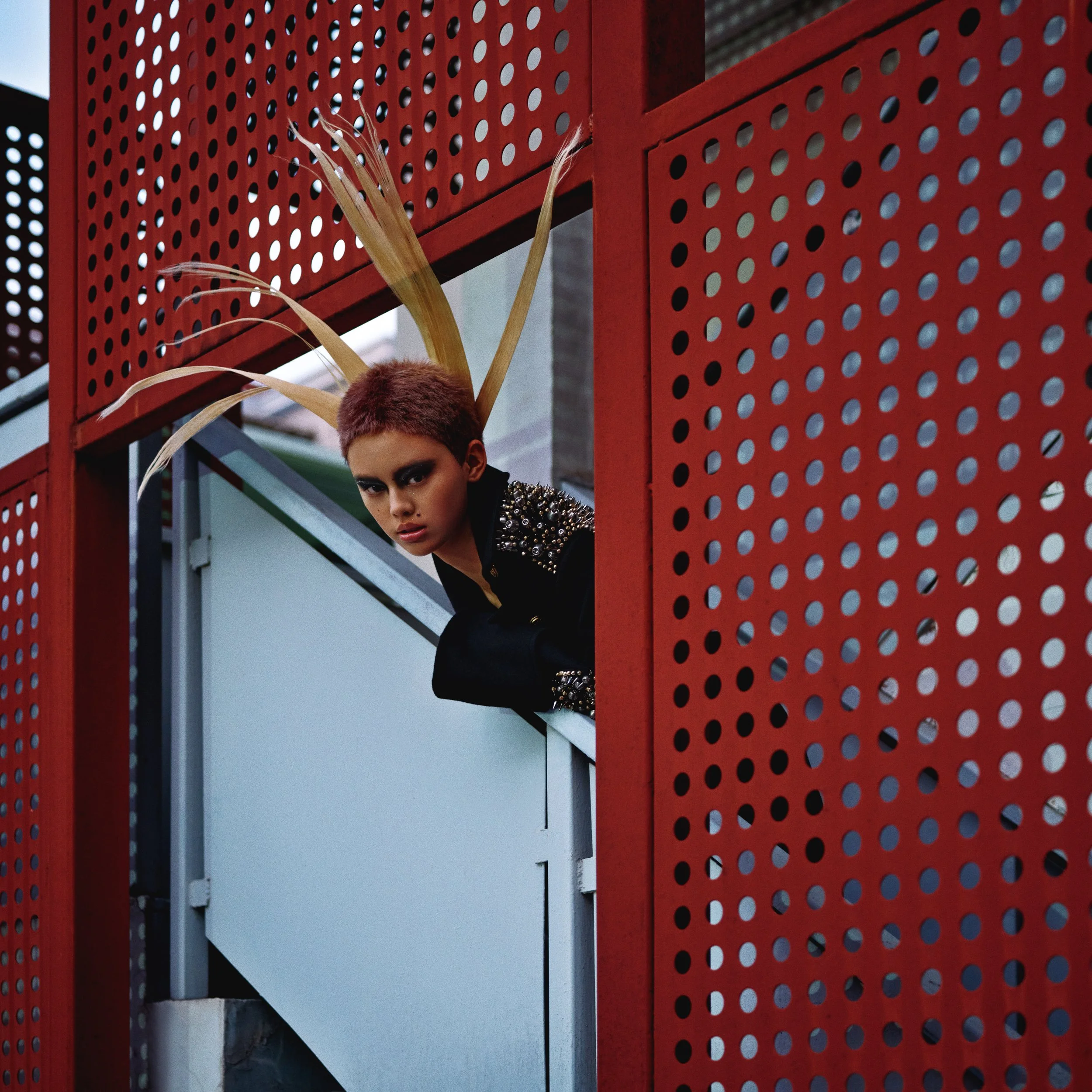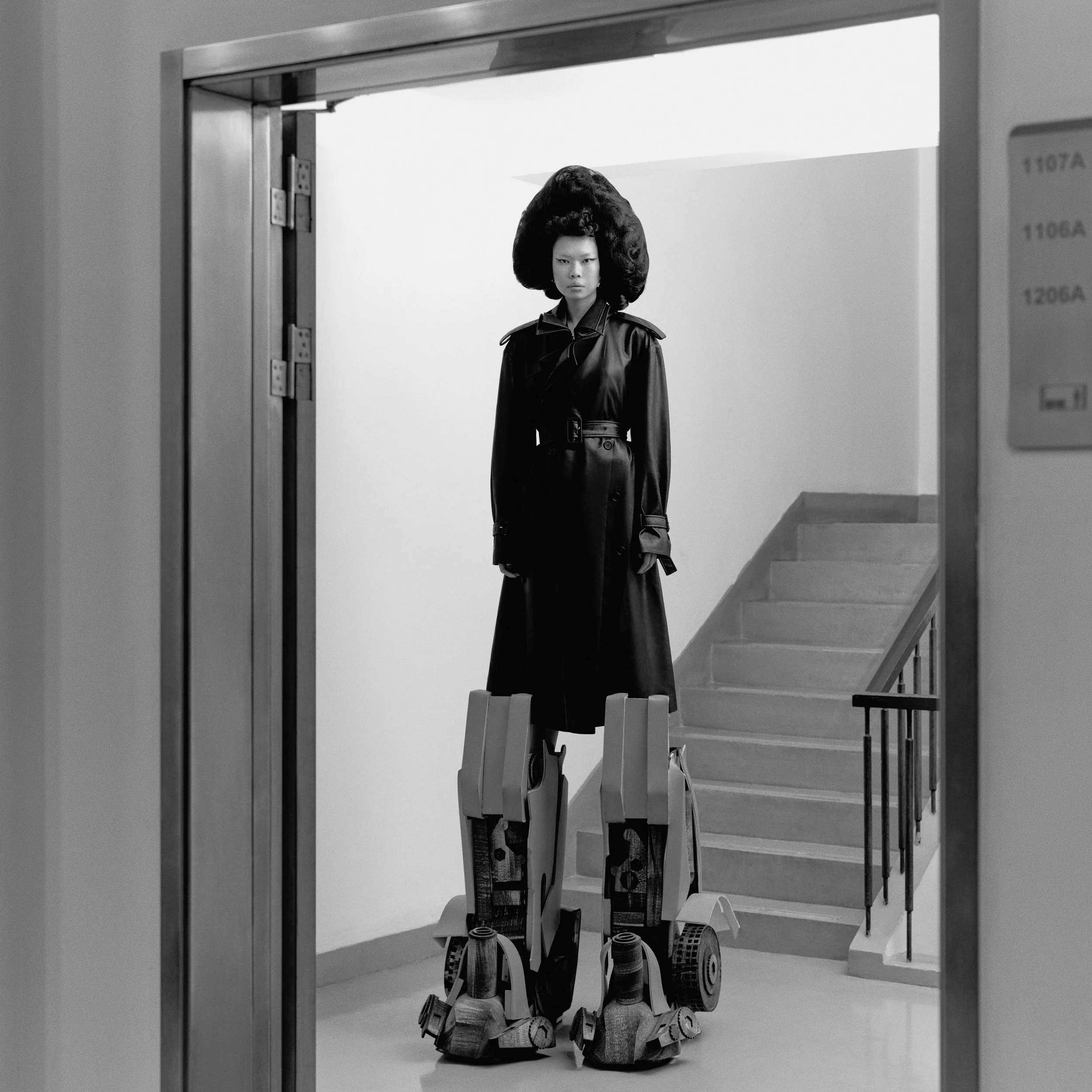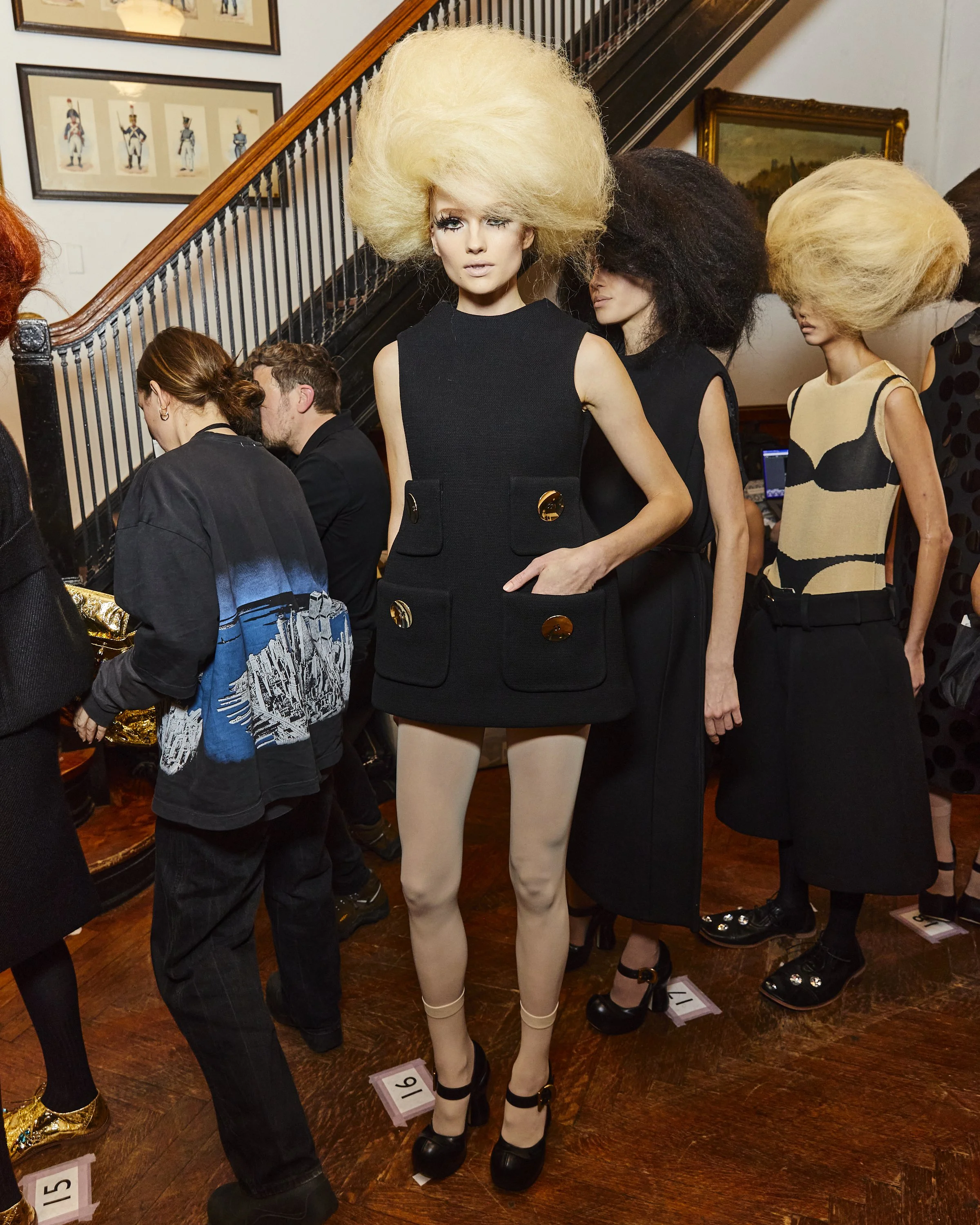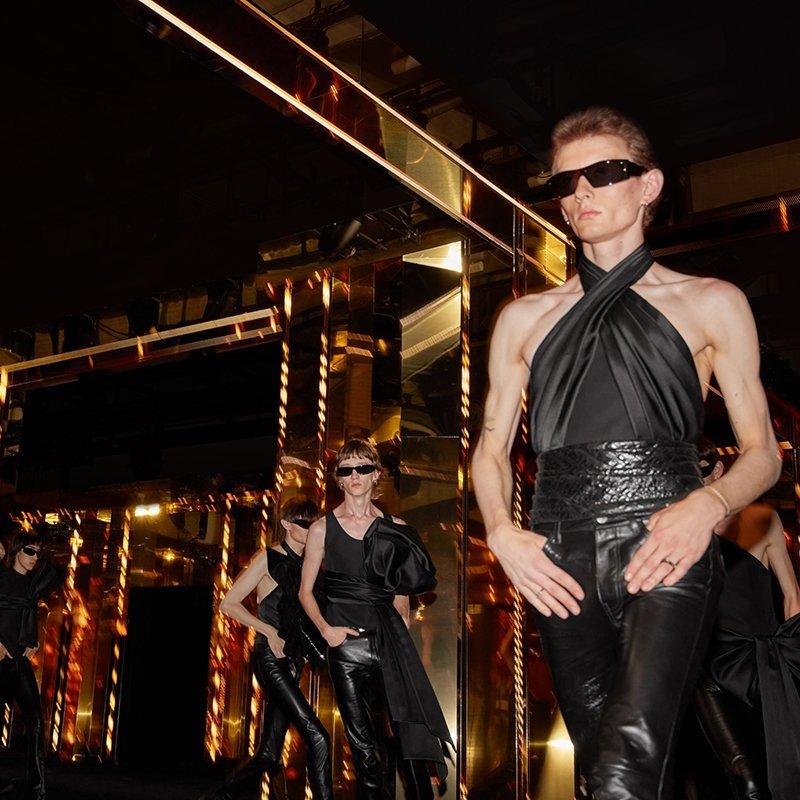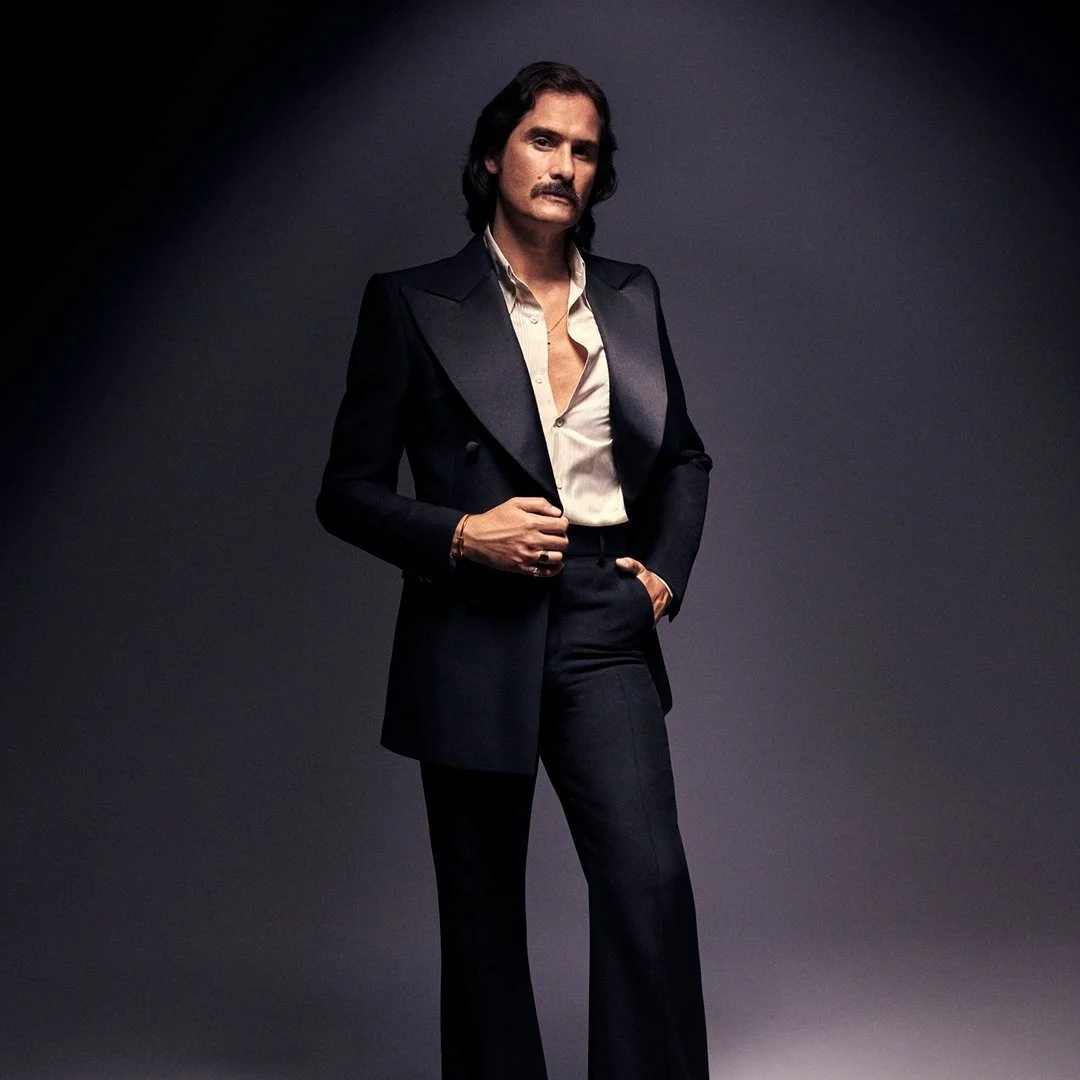MinghuZhang.
A showcase of dramatic cuts and styles by MinghuZhang, one of the most exceptional hair creatives to emerge from the experimental edge of Shanghai fashion. He talks to fellow hair master Syd Hayes about the origins and significance of his work.
It’s just before midnight and I’m in my home in London. After spending all day in the studio and sinking a few beers after work, I find myself nodding off on the sofa, then suddenly awoken by my alarm. Shit! I’m interviewing MinghuZhang in China via Zoom! Trying to plan around a seven-hour time difference hasn’t been easy, especially as John seems to have an even busier schedule than me. We finally manage to sit down in front of our laptops on either side of the world to discuss what is probably one of the most important things in my life: hair.
Why is hair so important to me? Because we all have it. I’m obsessed by it: I grew up around a hair salon and I’ve never done anything else in my working career. It has given me the most incredible lifestyle, travelling the world and meeting some of the most important influential people in the fashion and beauty world.
In my work I try to unlock and get to the heart of one of the hardest aspects of hair and fashion: taste. I’m not sure you can teach taste: I believe you either have it or you don’t. Along with his career and the hair story he has shot for Perfect, taste is a subject I want to talk about with John – via an interpreter who is joining us on Zoom. For while we don’t share a language, what we do have in common is our age and our craft for using a comb and scissors.
Syd: How did you get into hairdressing? Was it something you always wanted to do?
Minghu: Since I was little, I have been dyeing my hair. I was in fifth grade when I first started, and I loved everything that has to do with hair. Throughout high school, I studied art, which later led me to become an apprentice in a hair salon after graduating. I got to know one of my teachers, learning from him. It has been almost 10 years, and this shoot was inspired from the very beginnings of my work with Shushu/Tong, drawing inspiration from their very first show.
Syd: What drew you towards session work and the photographic side of the industry?
Minghu: I have been doing session hairstyling for roughly seven years. There are very few individuals in the industry with which I feel comfortable working.
Syd: How far has your job taken you around the world?
Minghu: Right before the pandemic hit, I used to travel a lot across North America and Europe, both working with celebrity clients and doing editorial work.
Syd: How has the industry been affected by the pandemic where you are?
Minghu: The industry is currently booming in China, as all of the resources are aggregating and collating.
Syd: What is the main difference between a good hair style and a bad one?
Minghu: There is definitely a difference between them; I believe there is a particular line. However it is all subjective, based on differences of opinions, aesthetic standards and understandings.
Syd: Has your childhood influenced your work?
Minghu: I believe so, to a certain extent, as one of my cousins is actually a hairdresser as well. I would also say my father too, as he has a passion for craft, working on drawings and crafting pieces at home. He is actually a construction worker, however he has a passion for creating with his hands.
Syd: What happens in your life day to day, currently?
Minghu: Currently, I am working on editorial work from my studio, preparing and shooting.
Syd: What are your tips for young hairdressers starting out?
Minghu: Study hard, do not copy anyone and try to see and examine as much as possible.
Syd: Who inspires you?
Minghu: My master, who I studied under, has inspired me greatly. Watching him work and create is like watching a sculptor constructing different forms and shapes. He utilises different materials and experiments with shape in a unique way.
Syd: How would you describe the images you created for Perfect? What was your inspiration behind them?
Minghu: Preparing for the shoot, I had a general idea of colour contrasting with the main inspiration being Shushu/Tong and the signature shape technique. Coming up with the design, I had a framework in mind from my session work with wigs, but also I wanted to improvise and have fun with the aesthetic and vibe of the model as well.
Syd: I wanted to ask you about the image of RunZhi on the staircase. What do you think makes it so interesting and unique?
Minghu: When I saw this model, I wanted to give her a short dyed hairstyle complementing the punk aesthetic [of the clothes]. I also wanted to add a traditional Chinese drama feeling to it, creating a paradox of styles together.
Syd: Were you also experimenting with texture?
Minghu: It was more about the overall aesthetic of the model and her unique signature look, from the clothes to the shape of the face and the attitude.
Syd: What about the shot of Yan with the blonde hair? It’s one of my absolute favourites. Could you tell me about the inspirations behind the hair?
Minghu: When I saw this model, I immediately thought of a storyline of her rushing to catch a train. I wanted to use her real hair, which is the black hair underneath, and as I was brainstorming I wanted something incredibly contrasting on top. I created and prepared this wig in advance and wanted to place it in a very rough, almost ‘slapped on’ way. I prepare meticulously before shoots, creating different versions of hair; however when it comes to the very moment of creating the look on set, I like to experiment and go with the moment and feeling on the spot. Much of the work you see on my Instagram stems from instant inspiration that I created just by going with the flow of the energy on set.
Syd: A very important consideration in hair is the taste level. How important is that to you when creating an image?
Minghu: Taste is absolutely crucial, alongside mastering the techniques and understanding how to achieve the image in your head. In my opinion, taste matters more and I certainly value it higher than the techniques of creating and skills, because you can learn techniques and get help with skills.
